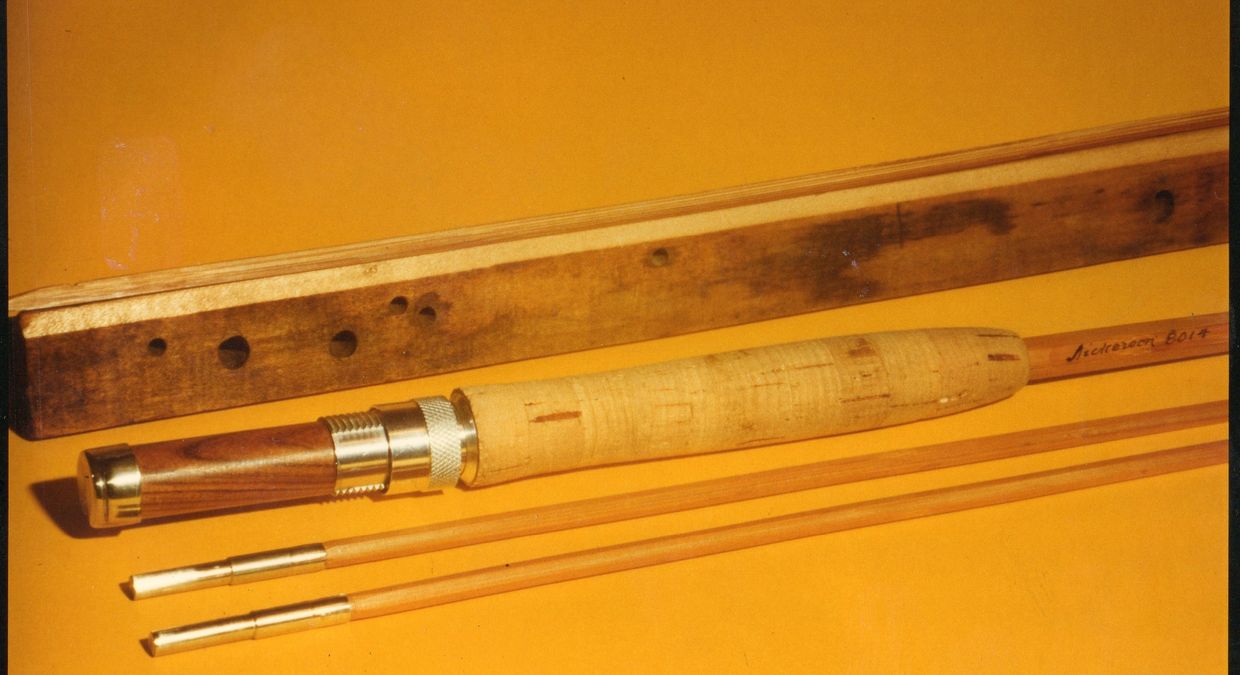Welcome to The Dickerson Site- Updated 10/13/2025, please see News & Updates section
Buyer/Collector beware
Like any other high-value collectibles, there are risks associated with buying and collecting vintage bamboo fly rods. In addition to the normal evaluation performed when buying a vintage bamboo fly rod, there are a couple of things the prospective Dickerson fly rod buyer should watch for. Specifically, it is important to use caution and do research when considering a restored/refinished Dickerson rod. A high percentage of restored Dickerson rods have had the original signature removed and rewritten during restoration. It is a shame that out of laziness or indifference a very important feature of a Dickerson rod has been lost forever. Taking proper care, the signature can almost always be saved in some form. The exception being, in the very rare case, the rod's varnish was in such bad shape that the signature has been worn away prior to restoration. Depending upon intent, re-inking a rod is also a deceptive practice that could be considered no different than forging a signature.
Additionally, keep in mind when buying a restored rod that the use/presence of replacement bamboo rod sections has reached a level of commonality in today's restoration environment.
When provided with samples or exact specifications, overseas blank manufacturers have replicated bamboo rod sections to exacting standards including taper, node placement, and bamboo tone. This practice has become so prevalent, consideration should be given to the chance a prospective restored rod has a replaced section. The replacement sections can be good quality-wise but they were not made by the original craftsman.
The safest way to buy a restored Dickerson rod is to get documentation of the work performed. Photos taken prior to any work are ideal. The name of rod's restorer can also be helpful, as they might keep records. Of course, vintage rods frequently change hands. Records, if present at one time, are sometimes lost or not passed on. If saving money over buying an original condition Dickerson is the goal, the better scenario is to buy a Dickerson rod in need of restoration and have the work performed and documented by a trusted restorationist under your commission.
If you want to own a Dickerson rod to fish and can only afford a restored rod, understand what you might be buying. If the unknown history doesn't concern you, own what makes you happy but pay accordingly.
Lastly, there were unsigned blanks acquired from the Dickerson shop years after his passing which were assembled into finished rods by a well known eastern rod maker. Dickerson style hardware was provided by the owner of the Dickerson rod shop and equipment at the time. These rods range in length from 6'6" to 7'6", with only one being 8ft. They are signed as Dickerson rods, though the signature is not accurate to the trained eye. There are between five and eight of these rods in circulation. Buyer beware!
Please see the site's section regarding Dickerson's signature and writing for more details.

A very late unfinished model 8014 with one of Dickerson's maple taper patterns in the background. This is a legitimate Dickerson-made rod, perhaps made in the mid-1970s during Dickerson's shop time with Tim Bedford in California.